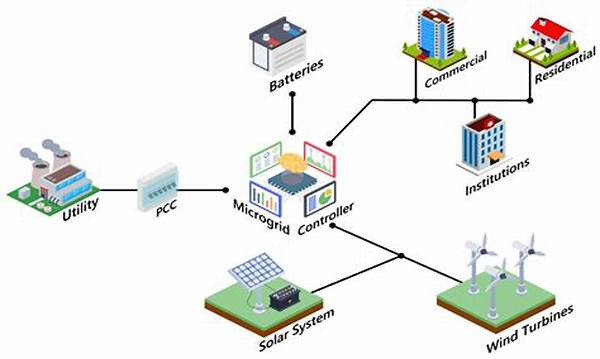Hey there, tech enthusiasts! Today, we’re diving into the fascinating world of real-time simulation techniques. These techniques are like the magic wands of the digital realm, allowing us to model and predict real-world scenarios in a virtual environment. Whether it’s for training pilots or designing complex engineering systems, these simulations are pivotal in our tech-driven lives. So grab your virtual reality headsets or maybe just a cup of coffee, and let’s explore this exciting topic together!
Read Now : Mastering Rpg Maker Toolset Techniques
Why Real-Time Simulation Techniques Matter
Real-time simulation techniques are pretty much the backbone of any industry that relies heavily on accuracy and efficiency. From automotive crash testing to virtual reality gaming, these techniques provide the flexibility and immediacy needed to make split-second decisions or optimize processes. Imagine being a pilot trainee experiencing lifelike scenarios through simulation without ever leaving the ground. It’s cost-effective and safe. Similarly, in the engineering world, these techniques can help foresee potential faults or breakdowns in machinery before they occur. So, whether we’re talking aviation, health care, gaming, or engineering, real-time simulations are expanding our ability to test and perfect new ideas before they hit the real world.
Elements of Real-Time Simulation Techniques
1. Precision: Real-time simulation techniques rely on precise algorithms to ensure realistic outcomes.
2. Interactivity: Users interact with simulations, making the experience engaging and educational.
3. Speed: These techniques offer instantaneous feedback, crucial for real-world applications.
4. Cost-Effectiveness: They reduce the need for physical prototypes, thus saving resources.
5. Scalability: Real-time simulations can adapt to various sizes and complexities of projects.
The Impact on Everyday Life
So, how do real-time simulation techniques affect your daily life? If you’ve ever played a high-end video game or used a GPS navigation system, you’ve already experienced the benefits. Video game developers use these techniques to create sprawling game worlds that react to player decisions instantly and dynamically. Meanwhile, your GPS system employs them to provide you with real-time traffic updates and alternate routes, saving you from the dreaded rush-hour standstill. Real-time simulation techniques are even enhancing telemedicine by allowing live, interactive consultations with healthcare professionals, bringing specialized care to remote areas. In short, whether you’re aware of it or not, these techniques make your life smoother and more efficient.
Real-Time Simulation Techniques in Different Industries
1. Aviation: Pilots train for countless hours using advanced flight simulators.
2. Automotive: Crash simulations help engineers design safer cars.
3. Healthcare: Surgeons practice complex procedures virtually before performing them in real life.
4. Energy: Real-time simulations optimize power grid management.
Read Now : Open Source Game Creation Tools
5. Manufacturing: Factories use them to test production line changes without halting output.
6. Military: Virtual battles prepare soldiers for real-world missions.
7. Education: Schools use simulations for interactive learning experiences.
8. Urban Planning: Cities use these techniques to plan better infrastructure.
9. Environmental Science: Real-time models help predict weather changes and natural disasters.
10. Retail: Simulations optimize supply chain and inventory management.
Real-Time Simulation Techniques: Looking Forward
As we move further into the digital age, the role of real-time simulation techniques continues to grow. They are becoming more sophisticated, providing even more detailed and accurate representations of the complexities of real-world processes. Innovations such as AI and machine learning are now being integrated to make these simulations smarter and more intuitive. Imagine a future where these simulations aren’t just for training or testing, but are integral parts of how we design our cities or manage natural resources. With the perpetual evolution of technology, the possibilities are truly endless. So, next time you interact with a virtual environment, take a moment to appreciate the underlying real-time simulation techniques making that possible!
What’s Next for Real-Time Simulation Techniques?
The future is bright for real-time simulation techniques, and there’s no sign of slowing down. With advancements in computing power and accessibility, even individuals and smaller startups can leverage these tools for innovation. Many startups are already using simulations to prototype and validate their ideas more quickly and at lower costs. In education, more schools are adopting simulation-based curricula to better prepare students for careers in STEM fields. As technology continues to evolve, we can expect even greater integration of real-time simulation techniques into our daily lives and across emerging industries. So, strap in because the ride is going to be exciting!
Wrapping Up Our Dive into Real-Time Simulation Techniques
In conclusion, real-time simulation techniques are truly game-changers, not just within tech circles but also in the broader spectrum of industries and everyday life. They allow for efficient problem-solving, creativity, and innovation without the risks and costs associated with real-world testing. As these technologies become more widespread and sophisticated, accessibility will also increase, ushering in an era where simulation becomes the norm rather than the exception. So, let’s celebrate real-time simulation techniques and the possibilities they bring, whether we’re designing the next big video game hit, saving lives in healthcare, or dreaming up the cities of the future. Thanks for joining me on this digital ride through the world of real-time simulations, and I can’t wait to see what amazing developments come next!





